Living
Coming to Washington
Showdown at the Supreme Court draws supporters, opponents from all over the U.S.
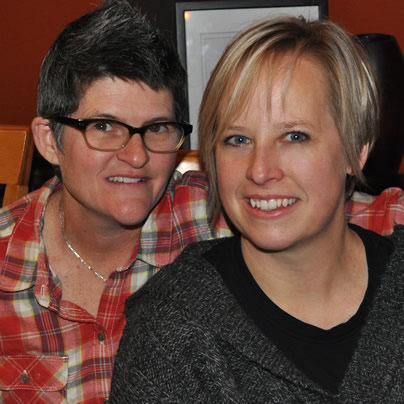
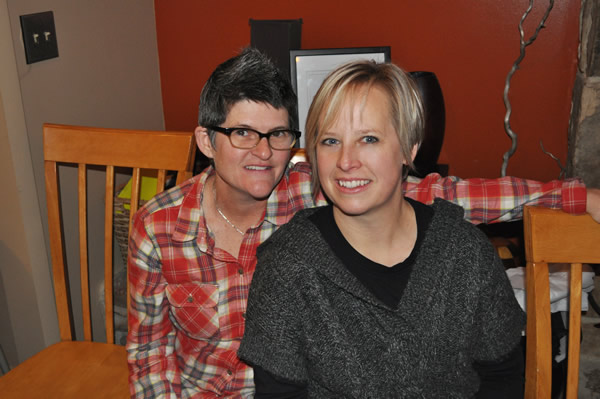
Amy Crampton and Tonya Agnew of Lafayette, Ind., plan to marry outside the U.S. Supreme Court on March 26. (Photo courtesy of Tonya Agnew)
Lafayette, Ind., residents Tonya Agnew and Amy Crampton plan to travel to Washington this weekend ahead of the U.S. Supreme Court’s oral arguments in the two cases that challenge the constitutionality of California’s Proposition 8 and the Defense of Marriage Act.
The couple’s 9-year-old son Leo is what Agnew describes as a “history buff.” But she and her partner of nearly 15 years have another thing on their agenda while in the nation’s capital.
“We thought it would be an amazing experience for him and for us to be part of history and see what’s happening and just be part of the vibe in town,” Agnew says. “Our next thought was kind of like, ‘Oh well we should totally get married while we’re there.’”
Agnew and Crampton plan to exchange vows at the Supreme Court on Tuesday against the backdrop of a rally in support of marriage rights for same-sex couples that is expected to draw thousands. Opponents of nuptials for gays and lesbians on the same day are scheduled to march to the court as the justices begin to hold oral arguments on the Prop 8 case.
Same-sex marriage supporters are expected to once again gather outside the court on Wednesday before oral arguments in the case that challenges DOMA.
“I’m cautiously optimistic,” Agnew says. “[I’m] really just mostly excited to be there and the fact that they’re even hearing them to begin with is just incredible.”
Marriage Equality USA Board President Cathy Marino-Thomas plans to travel from New York to D.C. on Monday with her wife Sheila, their 13-year-old daughter Jackie and other same-sex marriage advocates.
She was among those who spearheaded the years-long campaign for nuptials for gays and lesbians in New York that culminated in 2011 with Gov. Andrew Cuomo signing the same-sex marriage bill the state Senate narrowly approved into law.
Marino-Thomas says from her Manhattan office she has a “really, really positive feeling about this.”
“In the beginning it was just a small group of LGBT people who believed in the right to marry,” she says. “We graduated and more of our community believed in it. Then as time went on we started to gather straight supporters and then we started to gather politicians — Democrats, and the next step was we started to get some Republican support. Now we’re reading about the conservative argument for marriage equality and somebody like Ted Olson is leading the charge on one of the marriage cases. People are coming out for marriage left and right.”
Caleb-Michael Files, a junior at the University of Missouri-Kansas City, was in D.C. when the Supreme Court heard oral arguments in the case that challenged President Obama’s health care reform law. He was also here last June when the justices issued their 5-4 ruling that narrowly upheld it.
The Knob Noster, Mo., native, who says his family did not accept him growing up because of his sexual orientation, plans to return to D.C. in time for the oral arguments in the Prop 8 case.
“These are important milestones that we have to be present for and understand what’s going on,” Files says.
Rallies, vigils planned across the country
The two rallies outside the Supreme Court are among the more than 170 events scheduled to take place across the country to coincide with the oral arguments.
The School Without Walls GSA in D.C. will hold a candlelight vigil and rally in front of the Supreme Court on Monday. Retired New Hampshire Bishop V. Gene Robinson is among those scheduled to attend an inter-faith service at the Lutheran Church of the Reformation on Capitol Hill on Tuesday.
Other gatherings are scheduled to take place in Cumberland, Md.; Richmond, Va.; and Keyser, W.Va.
Up to 30 people are expected to attend a candlelight vigil on the beach in Gulfport, Miss., on Tuesday.
Leiana Wortel, who tried to apply for a marriage license with her partner and four other same-sex couples in Hattiesburg, Miss., in January as part of the Campaign for Southern Equality’s efforts to highlight the lack of marriage rights for gays and lesbians in the South, decided to organize the event after she learned about other gatherings around the upcoming oral arguments in the DOMA and Prop 8 cases.
“We just thought it would be nice to do something on the coast to get more of the local LGBT community involved and start some conversation here,” Wortel says.
An estimated 500 people are expected to attend a rally in support of marriage rights for same-sex couples at Federal Plaza in downtown Chicago on Monday.
Local LGBT rights advocate Richard Streetman expects the gathering could draw even more people if the Illinois House of Representatives this week approves a bill that would allow gays and lesbians to tie the knot in the state.
“Throughout the history of LGBT Americans, we have gathered in Washington, D.C., to petition our government,” he says. “There are times where that’s necessary. There are times when people should be working in their home communities.”
Advocates remain cautiously optimistic
Nine states and D.C. currently allow same-sex marriage.
A Rhode Island Senate committee on Thursday will hold a hearing on a bill that would allow gays and lesbians to marry in the Ocean State. Lawmakers in Delaware, Minnesota and New Jersey in the coming weeks and months are expected to consider measures that would extend marriage rights to same-sex couples.
Illinois Gov. Pat Quinn has said he will sign a same-sex marriage bill into law, but Streetman pointed out DOMA will remain on the books even if gays and lesbians can marry in the state.
“People in Illinois are excited,” he says about the outcome of the DOMA and Prop 8 cases. “Some people have unrealistic expectations of states giving us our state rights. It is almost symbolic until you deal with DOMA.”
Mississippi and Missouri are among the 31 states that have constitutionally banned same-sex marriage.
Wortel says a lot of people with whom she speaks “are optimistic” the justices will find Prop 8 and DOMA unconstitutional. She remains less hopeful about the prospect of nuptials for gays and lesbians in the Magnolia State.
“People are not as optimistic of what the outcome will necessarily be in Mississippi,” Wortel says.
Files notes questions over the future of Missouri’s constitutional ban on same-sex marriage if the justices strike down DOMA persist — Republicans control both chambers of the state Legislature, but a civil unions bill could be introduced once the Supreme Court rules on Prop 8 and DOMA.
“After the Affordable Health Care ruling, I think people are optimistic that there’s been a turning tide with the Supreme Court,” Files says. “These kinds of social and health care issues are issues we’re moving a little bit to the left on.”
Indiana lawmakers last month postponed a debate on a proposed constitutional amendment that would ban same-sex marriage until the outcome of the DOMA and Prop 8 cases is clear.
Agnew said she hopes they “really squash the current efforts underway” to amend the state constitution.
“That was exciting for us,” she says of the delayed debate in Indianapolis. “We’re hoping that it will be a positive outcome and will really trickle down to everyone — all of us out here in the Midwest and elsewhere.”

Did you melt like the Wicked Witch of the West this week?
As summer temperatures rise, keeping your home or apartment cool during a heat wave can become both a comfort issue and a financial challenge. One of the most effective ways to keep a home cool is to prevent heat from entering in the first place. Sunlight streaming through windows can significantly raise indoor temperatures. Consider the following solutions:
• Close blinds or curtains during the hottest parts of the day. Blackout curtains or thermal drapes can reduce heat gain by up to 30%.
• Install reflective window films to block UV rays and reduce solar heat without sacrificing natural light.
• Use outdoor shading solutions such as awnings (yes, the ones you removed because they were “dated”) and shutters to limit direct sunlight.
Fans are a cost-effective way to circulate air and create a wind-chill effect that makes rooms feel cooler.
• Ceiling fans should rotate counterclockwise in the summer to push cool air down.
• Box fans or oscillating fans can be placed near windows to pull in cooler evening air or push hot air out.
• Create a cross-breeze by opening windows on opposite sides of your home and positioning fans to direct airflow through the space.
• For an extra cooling effect, place a bowl of ice or a frozen water bottle in front of a fan to circulate chilled air.
To optimize natural ventilation, open windows early in the morning or late in the evening when outdoor temperatures drop. This allows cooler air to flow in and helps ventilate heat that built up during the day.
Appliances and electronics generate a surprising amount of heat. To reduce indoor temperatures:
• Avoid using the oven or stove during the day; opt for no-cook meals, microwave cooking, or grilling outside.
• Run heat-producing appliances like dishwashers and clothes dryers in the early morning or late evening.
• Unplug electronics when not in use, as even standby power can add heat to your space.
• Switching to energy-efficient LED lightbulbs can also reduce ambient heat compared to incandescent lighting.
If you do use an air conditioner, maximize its effectiveness by:
• Setting it to a reasonable temperature—around 76–78°F when you’re home and higher when you’re away.
• Cleaning or replacing filters regularly to maintain airflow and efficiency.
• Sealing gaps around doors and windows to prevent cool air from escaping. (Didn’t we all have a parent who said, “Close the door. You’re letting all the cool out?”)
• Using a programmable thermostat to optimize cooling schedules and reduce energy use.
If it is not cost-prohibitive, adding insulation in attics and walls can greatly reduce heat transfer. Solar panels that reflect heat can also help, as well as offset the cost of their installation. Adding weatherstripping around doors and windows, sealing cracks, and using door sweeps can make a significant difference in keeping heat out and cool air in.
Natural and eco-conscious methods can also help cool your home.
• Snake plants, ferns, or rubber trees can improve air quality and slightly cool the air through transpiration.
• White or reflective roof paint can reduce roof temperatures significantly.
• Cooling mats or bedding can make sleeping more comfortable without cranking up the A/C.
For renters or those who can’t make permanent modifications, there are still plenty of ways to keep cool.
• Use portable fans and A/C units instead of built-in systems, making sure they are the correct size for your space.
• Removable window film or static cling tinting can reflect heat without violating your lease.
• Install tension rod curtains or temporary blackout panels instead of hardware-mounted window coverings.
• Add draft blockers and weatherstripping tape that can be applied and removed without damage.
• Cover floors with light-colored rugs to reflect heat rather than absorb it.
• If allowed, use temporary adhesive hooks to hang reflective materials or light-filtering fabrics over windows.
Even if your space is warm, you can still take steps to help your body stay cool.
• Wear light, breathable fabrics like cotton or linen.
• Stay hydrated and avoid caffeine or alcohol during peak heat hours.
• Take cool showers or use damp cloths on your neck and wrists to bring your body temperature down.
Keeping your home or apartment cool in the summer doesn’t have to be expensive or energy-intensive. With a few adjustments such as blocking sunlight, optimizing airflow, using fans effectively, and making renter-friendly upgrades, you can create a more comfortable indoor environment while keeping energy bills in check.
Valerie M. Blake is a licensed Associate Broker in D.C., Maryland, and Virginia with RLAH @properties. Call or text her at 202-246-8602, email her at DCHomeQuest.com, or follow her on Facebook at TheRealst8ofAffairs.
Real Estate
The world’s on fire and D.C. is on sale (sort of)
Prices are up, but then again, nothing makes sense anymore

ICE is disappearing people, revered government agencies are shuttering, and who knows if we’ll be in World War III next week? But can you believe prices in D.C. are actually still up 6.3% since last year? It doesn’t make sense, and perhaps that does make sense, because nothing seems to make any sense any more.
That said, there are some parts of our market that are truly suffering. The interest rates, which have been up, up, up for about four years now, are the ongoing rain on our market’s military parade. Combine that with 75,000 federal employees taking a buyout nationwide, and DOGE cuts eliminating around 40,000 federal jobs in the District (per estimates by the D.C. CFO), not to mention thousands of other job losses in non-governmental organizations due to funding and program cuts, and you’ve got a case of uncertainty, and downright unaffordability in the pool of otherwise would-be buyers.
This has had a marked impact on properties that starter-home buyers and low- to mid-level employees would otherwise buy, most notably condominium and cooperative apartment units. These properties have already slowed in our market thanks to the profound impact that higher interest rates have had on their monthly carrying costs—pair that with job insecurity, and a lot of condos are proving to be very difficult to sell indeed.
So how is the average sale price up in our market?
The increase is almost entirely due to the resounding strength of the single-family home market, especially in upper Northwest D.C., where it is still quite common to see bidding wars, even on properties pushing past the $3M mark. It seems that buyers in that echelon are less impacted by a few percentage points in the interest rate, and less concerned about their job security. Notably, those buyers are often married with children and have an absolute need for more space, must stay in the area due to one spouse’s job, or the kid’s friend group, regardless of whether the cost of owning is thousands of dollars more per month than it would have been in 2020 or 2021. The continued appreciation in these neighborhoods defies imagination.
So, what to do if you are not one of those lucky enough to be shopping for a $3M home? The short answer: wait. If you want more space, rent your current place out and learn the joys of being a landlord while someone else pays your mortgage. Need the equity from your current home to buy your next place? Get a home equity line of credit, or loan, and pull the equity out of your current place to buy the next one. Or—and I have never recommended this before in 21 years of being a Realtor—rent for a few years. Sure, I’d love to list and sell your condo so you can climb the real estate ladder, but it might just be a waste of time, money or both if you could just ride out this storm and sell in a DOGE-less future.
All this said, there are some condos that seem to be immune from this recent negative news. Anecdotally, it feels like it’s the truly special ones that do just fine no matter the market. Our recent listing in Capitol Hill had a view from every one of its 15 windows of the Supreme Court. Sold in five days with six offers. Another condo was on the top two floors of a townhouse and had the coolest black wood floors that gleamed like a grand piano. Sold in four days at full price.
So, all is not for naught if you have a condo or home in an area that people want to be in, with nice space, light, amenities and a certain je ne sais quois. And, as long as we have a democracy in a few years, my experience says our market will be back, stronger than ever, really soon.
David Bediz is a Realtor and mortgage loan broker for the Bediz Group LLC and Home Starts Here, LLC. Reach him at [email protected].
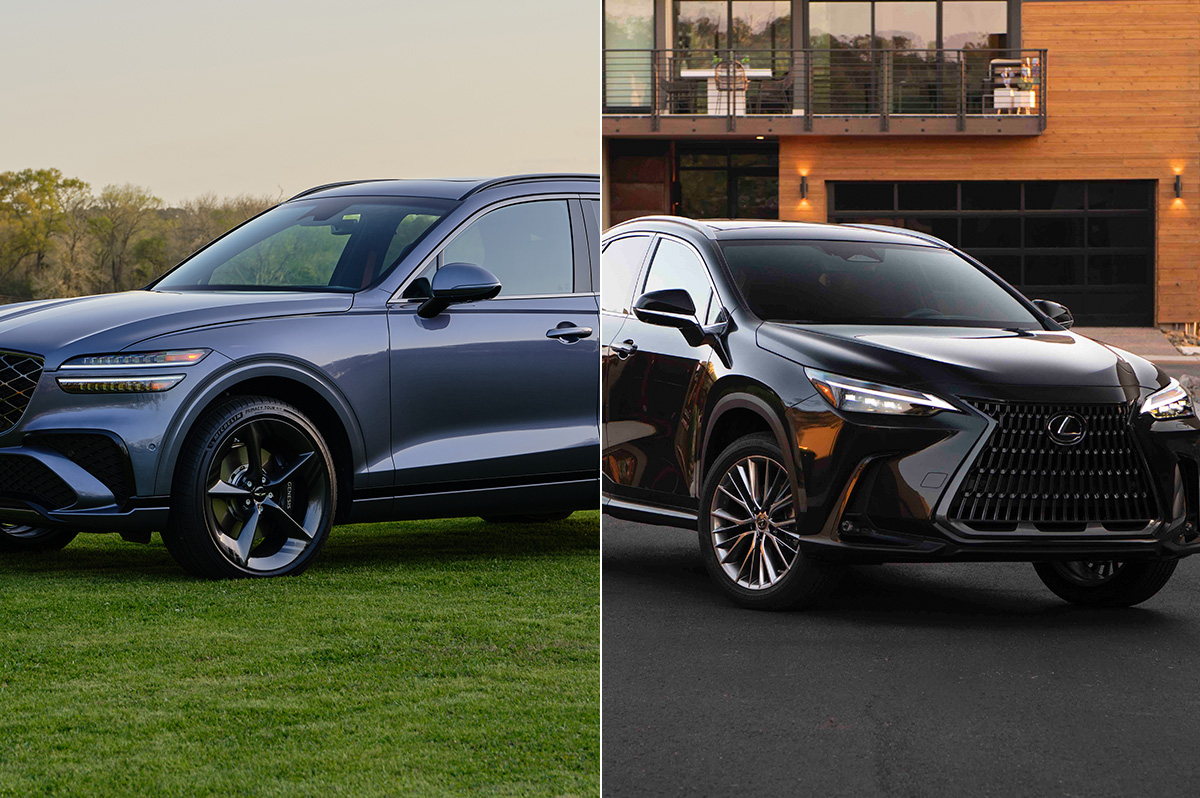
In this corner, there’s the Genesis QV70, newly updated and full of glitzy gizmos. And in the opposing corner, there’s the Lexus NX, a fan fave known for comfort and reliability.
Both are strong contenders. Both have proven to be equally adept at bobbing and weaving through traffic. And both can go toe to toe with pricier competitors.
And yet, what would happen when they sparred against each other? Here’s your ringside seat to find out.
GENESIS QV70
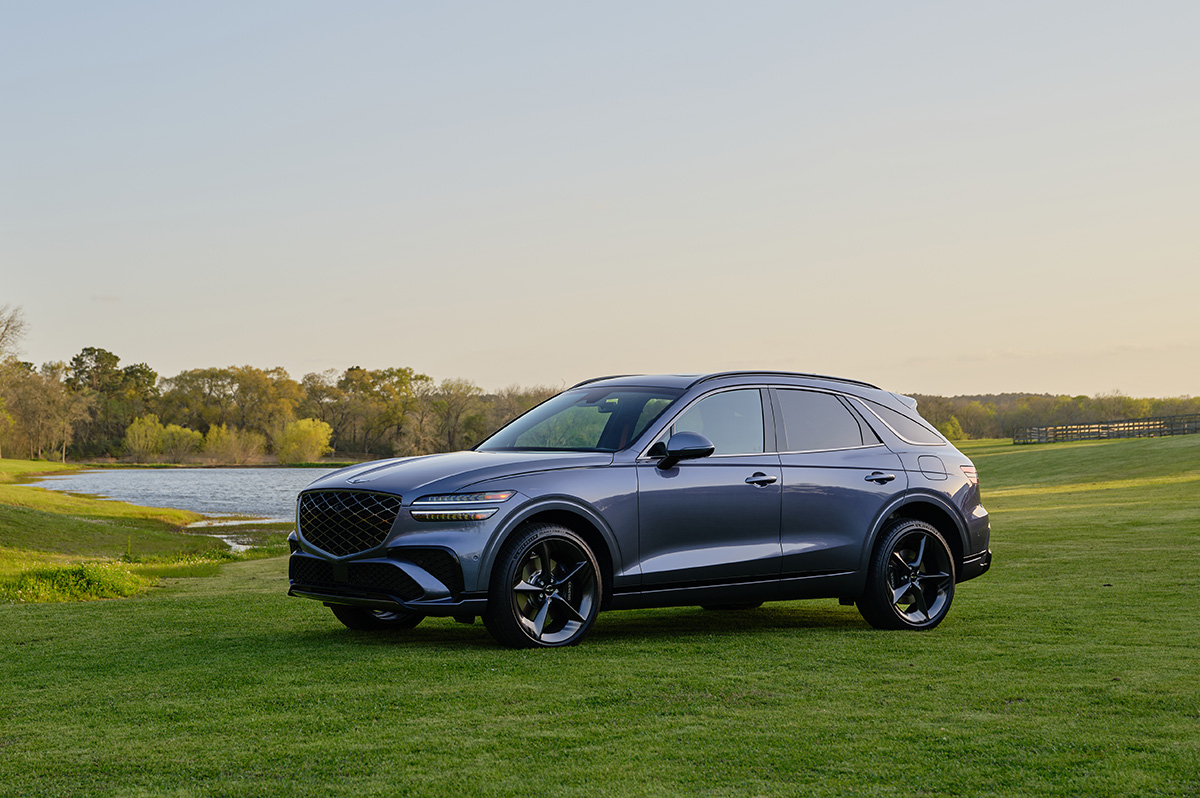
$50,000
MPG: 22 city/28 highway
0 to 60 mph: 5.9 seconds
Cargo space: 28.9 cu. ft.
PROS: Stylish. Good value. Lots of standard amenities.
CONS: So-so fuel economy. Quirky dash controls.
IN A NUTSHELL: When it comes to speed, the Genesis QV70 is faster on its feet than the Lexus NX. Neither of these crossover SUVs is a lightweight, but the QV70 offers more potent powerplants—including an all-electric version that zips from 0 to 60 mph in just 3.8 seconds. In other words, Porsche Macan S territory.
The two gas-powered options—a four-cylinder turbo and twin-turbo V6—also got my blood pumping. So did the velvetlike suspension mixed with deft handling and stop-on-a-dime braking. But this adrenaline rush comes at a cost: sacrificing fuel economy.
As for the automaker’s design philosophy—“athletic elegance”—it’s on full display here: an oversized grille inspired by the Genesis emblem, the dramatically arcing silhouette, and those distinct quad headlights and taillights. It’s not easy to stand out when 25% of all vehicles sold in the U.S. are compact crossovers, so kudos to the QV70 for being such a head-turner.
The mod-yet-minimalist styling carries over to the cabin, with its high-quality materials: real-wood accents, soft-touch plastics and a tasteful glass shift knob. New this year is a sweeping 27-inch dashboard monitor, which houses the gauge cluster and infotainment touchscreen. Alas, this display is positioned a bit far from the driver (though I must admit reaching for it did help stretch a few tight back muscles).
Instead of being a costly extra, this gigantic monitor comes standard. So do synthetic leathers seats, nine-speaker stereo, smartphone/wireless connectivity, hands-free liftgate, tons of safety gear and more. Options include a panoramic sunroof, three-zone climate control, 16-speaker Bang & Olufsen audio, synthetic suede headliner, sound-reducing rear windows, automated parking and other goodies.
What’s the score so far? Despite some minor quibbles, the Genesis QV70 is a worthy challenger that pulls no punches.
LEXUS NX
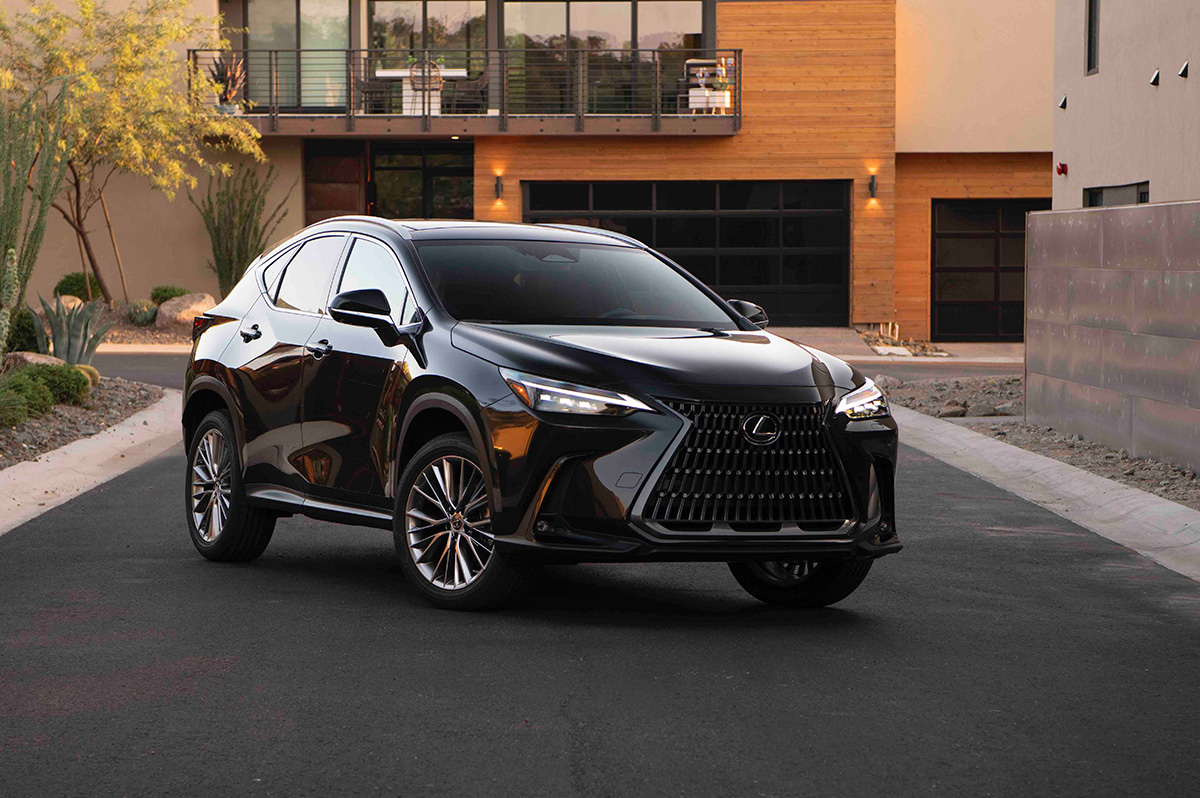
$43,000
MPG: 26 city/33 highway
0 to 60 mph: 8.2 seconds
Cargo space: 22.7 cu. ft.
PROS: Fuel efficient. Comfy seats. Rock-solid reliability.
CONS: Pokey base model. Limited rear storage.
IN A NUTSHELL: Sure, the Lexus NX isn’t as speedy as the Genesis QV70. But, as with the tortoise and the hare, sometimes slow and steady wins the race. And really, it’s only the entry-level NX that feels sluggish, such as when trying to quickly merge into freeway traffic.
Other trim levels, including two hybrid options, are just fine. And no matter the engine choice, the counterpunch here is that these vehicles get better gas mileage: 20% higher fuel economy than in either the four-cylinder or V6 in the Genesis. The two NX hybrids are even more green, with the high-end plug-in version able to travel up to 37 miles on electric power alone. One downside: There is no all-electric NX—well, at least not yet.
As with parent-company Toyota, Lexus offers stellar vehicle reliability—often ranked No. 1 in dependability and crash-test surveys year after year. Lexus vehicles generally hold their value better than Genesis, because this newer brand has a shorter history. Lexus also has a larger dealer network, though the number of Genesis dealerships is growing.
But when it comes to cargo space, the NX is about two inches shorter and narrower than the QV70, which has more stowage area. And Genesis handling is sportier, though the Lexus feels sure and well-grounded.
Luxe interior amenities are basically the same in both vehicles. But interior styling in the QV70 is trendy, while the NX is more understated. In other words, a choice between sassy and classy.
This is a very competitive vehicle segment, with Euro models like the Audi Q5, BMW X3 and Mercedes GLC also duking it out in what seems like a clash of the titans.
But as for the Genesis QX70 or Lexus NX, which is the winner? For me, both are real knockouts—so I’d call it a draw.
-

 U.S. Supreme Court4 days ago
U.S. Supreme Court4 days agoSupreme Court upholds ACA rule that makes PrEP, other preventative care free
-

 U.S. Supreme Court4 days ago
U.S. Supreme Court4 days agoSupreme Court rules parents must have option to opt children out of LGBTQ-specific lessons
-

 Congress5 days ago
Congress5 days agoSenate parliamentarian orders removal of gender-affirming care ban from GOP reconciliation bill
-

 District of Columbia5 days ago
District of Columbia5 days agoMan sentenced to 15 years in prison for drug deal that killed two DC gay men








